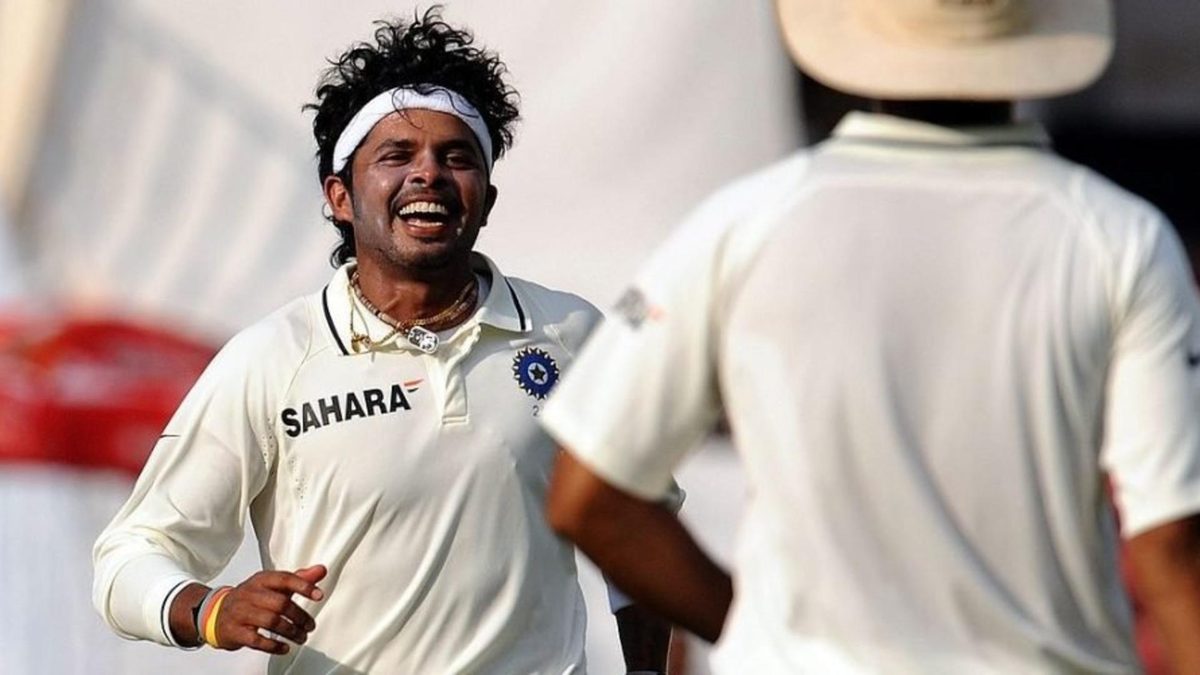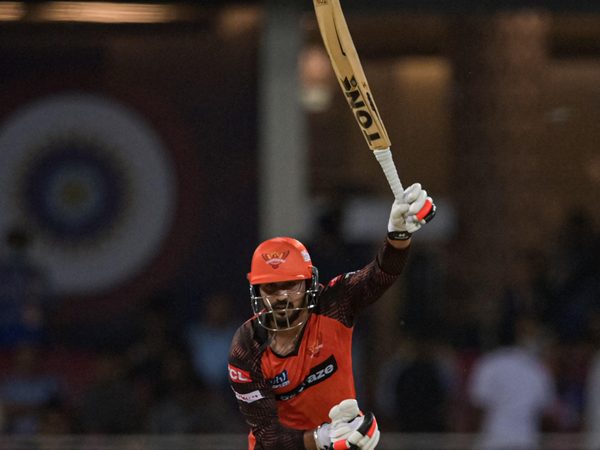
Nine years on from his last first-class game, Sreesanth is set to return to red-ball cricket in the upcoming Ranji Trophy. He speaks to Aadya Sharma about the good, the bad, and the ugly in a turbulent career.
A decade and a half ago, Indian cricket went through a seismic shift: the head coach role shifted hands, the iconic captain was displaced and a new ideology took over, one insisting on fresher legs and bolder tactics.
The bowling underwent a facelift too. In came a wave of quick bowlers to replace the old guard, looking to break out of the spin hegemony. One of them was Shanthakumaran Sreesanth, a firebrand quick with explosive pace and an attitude to boot. There was something different about him: the celebrations were over the top – sneering, pitch-beating, death-staring and whatnot – an extra spring in his stride, a tempestuous persona that kept you hooked.
Most importantly, the seam kicked off the pitch upright, the swing to right-handers swerved with danger, and the old, frayed ball gathered lively reverse-swing. On his day, Sreesanth bowled like a dream. And, before it all went so horribly wrong, there were good days.
“I enjoyed the limelight at that time,” Sreesanth, now 39, tells Wisden India, revisiting the early years of his international career. “It was nice to see, across the globe and especially in the cricketing fraternity, they were praising the seam position and reverse swing.”
He loved taking down the big names, recalling a Tamil saying that translates to get the head. In a 27-Test career, he dismissed Hashim Amla six times and accounted for AB de Villiers on five occasions, managing to sneak through defences even on dry, fruitless days. That delivery to Jacques Kallis in 2010, a rip-snorter that jumped off a length and made the batter contort, is still regarded as one of India’s very best. According to Sreesanth, there were a couple of even better ones.
“I will surely say the ball I got [Ashwell] Prince out when he was batting well [is one of my best]. I think he was about to reach fifty in Cape Town in 2010, where I got a five-for. And the very next ball I got [Mark] Boucher out with an outswinger.
“But the best ball I have ever bowled was to Daren Ganga [during India’s tour of the West Indies in 2006]. I rate that as the No.1 ball I have ever bowled. That was an out-swinging yorker. I was bowling 123 [kph], 126, 121, 124 [YouTube footage shows Sreesanth bowling in the low 130s prior to the wicket]. Even the commentators were saying ‘He’s tired’. I think it was my sixth or seventh over, and it was very well planned.”
“I think only Munaf [Patel] knew. ‘Saale, natak kar raha hai’ (I know you are acting), because he’s seen me play for Indian Airlines and league matches in Chennai. It used to be one of my tricks – show the batsman that you’re really tired, bowl the slower bouncer with full effort, and say, ‘Shit yaar’, and tie your laces. Don’t even look [at him] and then say ‘Kya yaar out, ho ja (get out, man). And then bowl that faster one.”
For a nation that had been fed an insipid diet of military-medium pace bowlers, Sreesanth’s bowling carried an air of novelty. There was always something to look forward to, something cinematic to what he brought to the table. While recalling those days, you can still see his eyes glisten. His animated retellings almost match the peppiness of his bowling.
Learning quickly and evolving rapidly, Sreesanth picked up 61 wickets at 27.67 for India in 2006 – only his second year in international cricket – but it didn’t shrug off the everlasting spotlight on his on-field antics. Some found little joy from the theatricality, a sentiment that was amplified when his returns with the ball were inconsistent. The barrier of good to excellent was pushed on occasion but a sense of unpredictability underpinned both the cricketer and man.
Aware of his true potential, India picked him for big games though, and he featured in two World Cup wins, the T20 version in 2007 and the ODI triumph four years later. “Highs and lows of Indian cricket, I was part of it,” he says. From his international debut until the historic evening in Mumbai, Sreesanth’s wicket tally among India seamers was only bettered by Zaheer Khan.
After the World Cup win though, Sreesanth’s opportunities receded; another stream of young quicks emerged and a toe injury later that year only pushed him further away. His tone deepens as he recalls the aftermath of 2013, the year his career took a murky turn.
One among the three accused Rajasthan Royals players in the IPL’s chaotic spot-fixing scandal, Sreesanth was arrested and became the subject of fervid media scrutiny. The BCCI eventually banned him for life and, at 30, his career was in tatters. For the next six years, as he fought for a return to the game, Sreesanth waded through the repercussions. Cricket had been taken away: to earn his wages and restore his reputation, he had to look elsewhere. He found his solace through working in the entertainment industry as an actor.
“I really need to thank the shooting [filming] side,” Sreesanth candidly admits, “be it the reality shows [or movies], to put food on the table. People said a lot of things when I did reality shows, that he is doing it for entertainment. But that was the only way I could put the food on the table.
“Cricket wasn’t there. It was completely gone. Back of the mind, sooner or later [things would get better]. But how long will it take?”
As each year passed, Sreesanth’s chances of returning to any form of serious cricket appeared to recede. He was still clinging on to his dream when a lifeline was thrown to him in 2019; the Supreme Court of India asked the BCCI to reconsider its lifetime ban and Sreesanth’s suspension was eventually reduced to that of seven years.
In 2021, with his ban lifted, he returned to play for Kerala, appearing in the both the domestic List-A and T20 competitions. Understandably, the run-up has shortened, the pace has dropped, and even though there are hints of his trademark aggression, Sreesanth is steering away from his 25-year-old showboating self. As he prepares for his red-ball return in the Ranji Trophy, which begins this week, he’s more intent on making up for lost time.
“I am in that zone where, I have told all the bowlers in my team, that you can look into the face and all that, but more than talking, with my own experience – which I learnt from Allan Donald when I played for Warwickshire – it’s good to save that energy, go back to the run-up and give it all out when you bowl.
“Getting him out is the best way to get him injured. When you are a youngster, you want to bounce him, bowl a yorker. That side of Sreesanth is gone. I would love to get wickets rather than get anybody hurt. When I say this, people will say ‘You are not fast enough to hurt anybody’, but trust me, this season might be a surprise for a lot of people. Every ball, every practice session means business. It’s like life and death for me.”
He’s not bothered about the age barrier either. Fuelling his motivation are the likes of Imran Tahir, Sohail Tanvir, Brad Hogg and others who’ve pushed the limit themselves. “One of the motivations is James Anderson,” he adds. “The way he bowled [in the Ashes], it was pure motivation.
“I’m sure it’s still hitting the seam, still moving, getting my beautiful outswingers. I am much wiser and not that aggressive, but the biggest change will be, I am a father now. I will be much more patient after marriage, so in batting also I’ll start scoring runs, like the oldies and veterans playing first-class.
“Even the guy [Darren Stevens], at 45, scored a first-class hundred for his county. So I have another seven years to go, wow.” There’s a big smile on his face.
We’re back to another seismic shift in Indian cricket: the coach has changed, so has the captain. Sreesanth’s still around, and while a return to the national side is an outlandish dream, he still wants to make some noise. He’s found his own story in the plot of the Indian movie Jersey, which charts the comeback journey of a 36-year-old cricketer. “I am not here just to come and get respect. No. I am here for something that is mine, which was taken away from me and I am not here to take anybody’s place. I am here to take my own place which I deserve the most.
“When I go upstairs, which I truly believe in, I don’t want to be in a position where I can’t answer to God what I did with my talent.”








